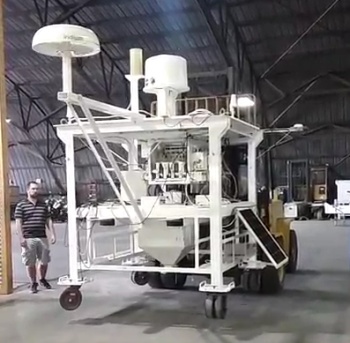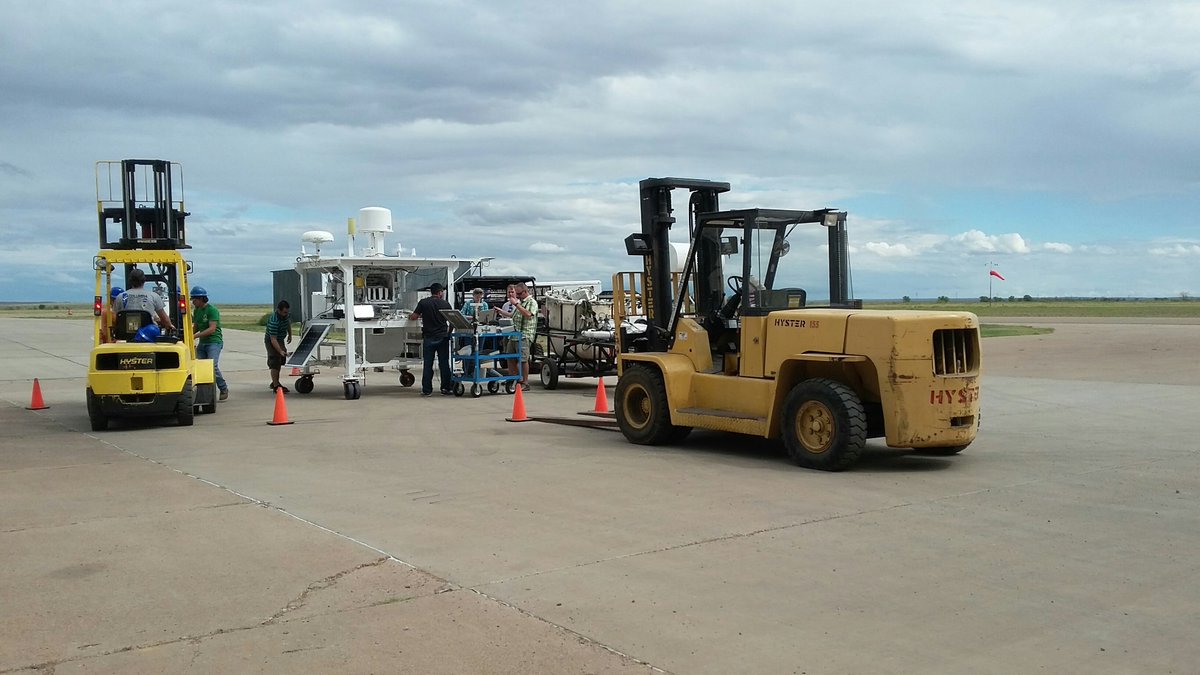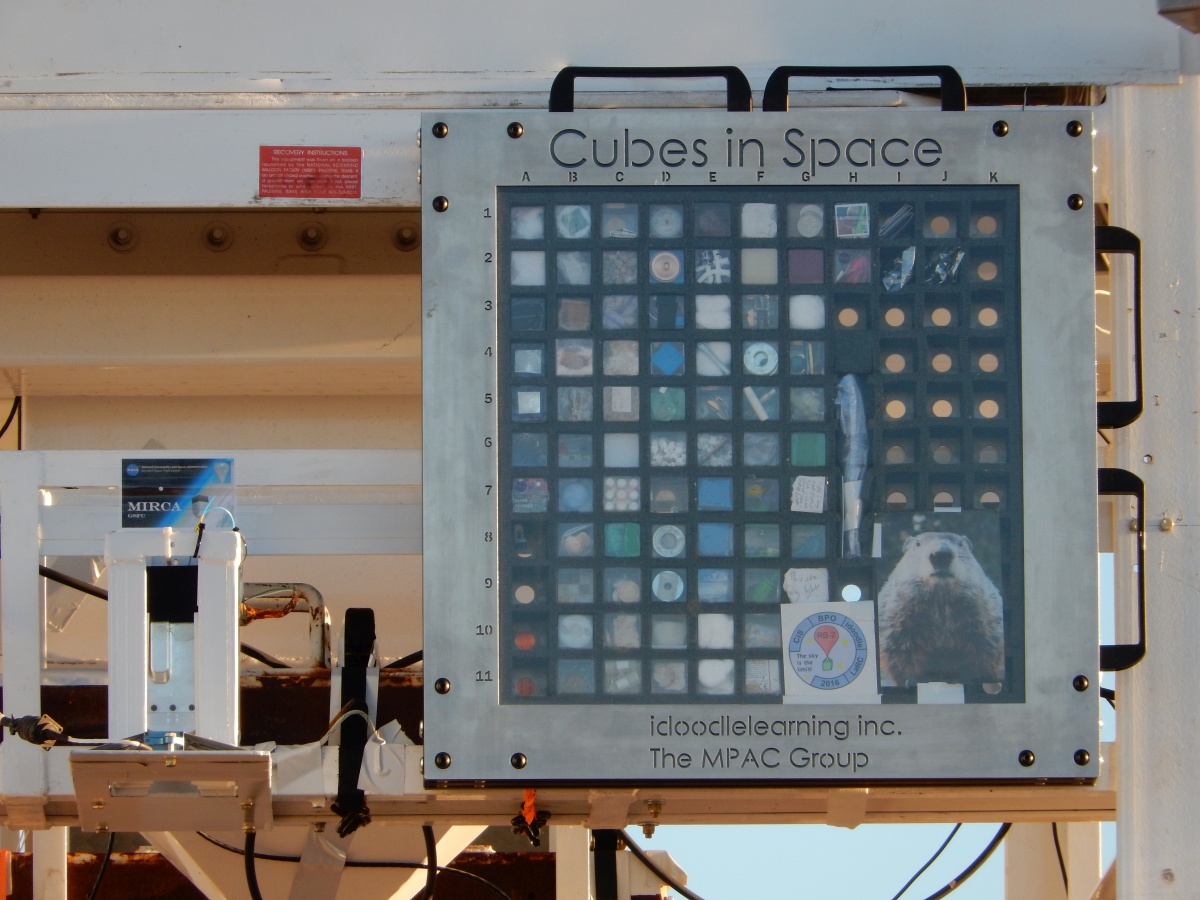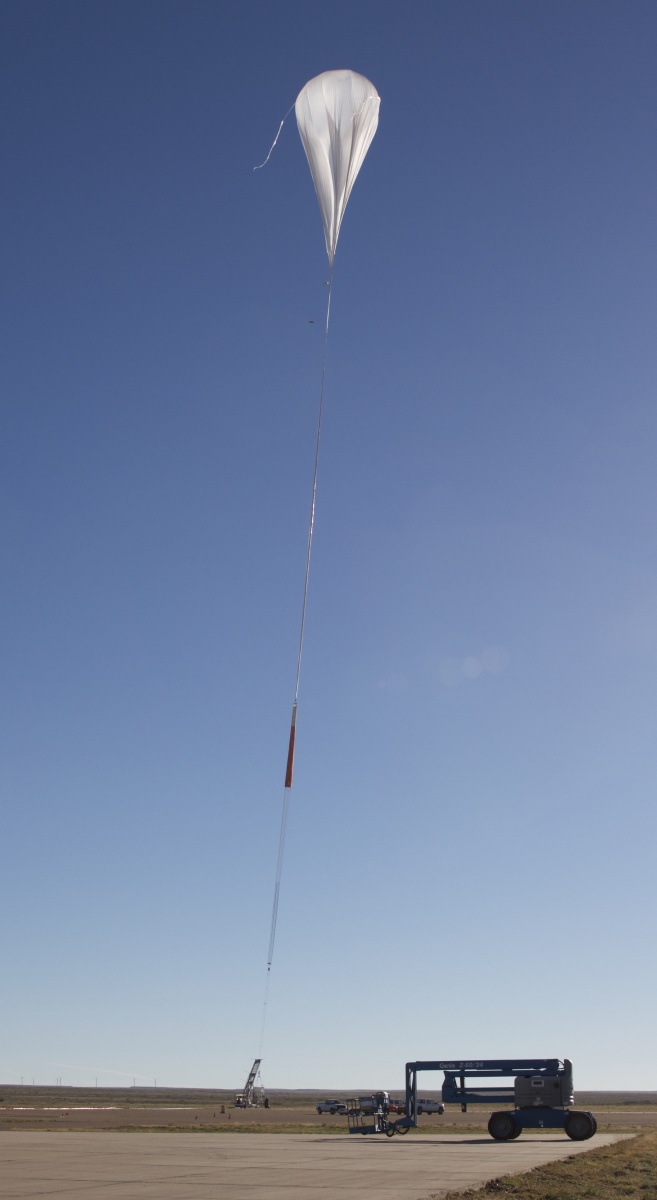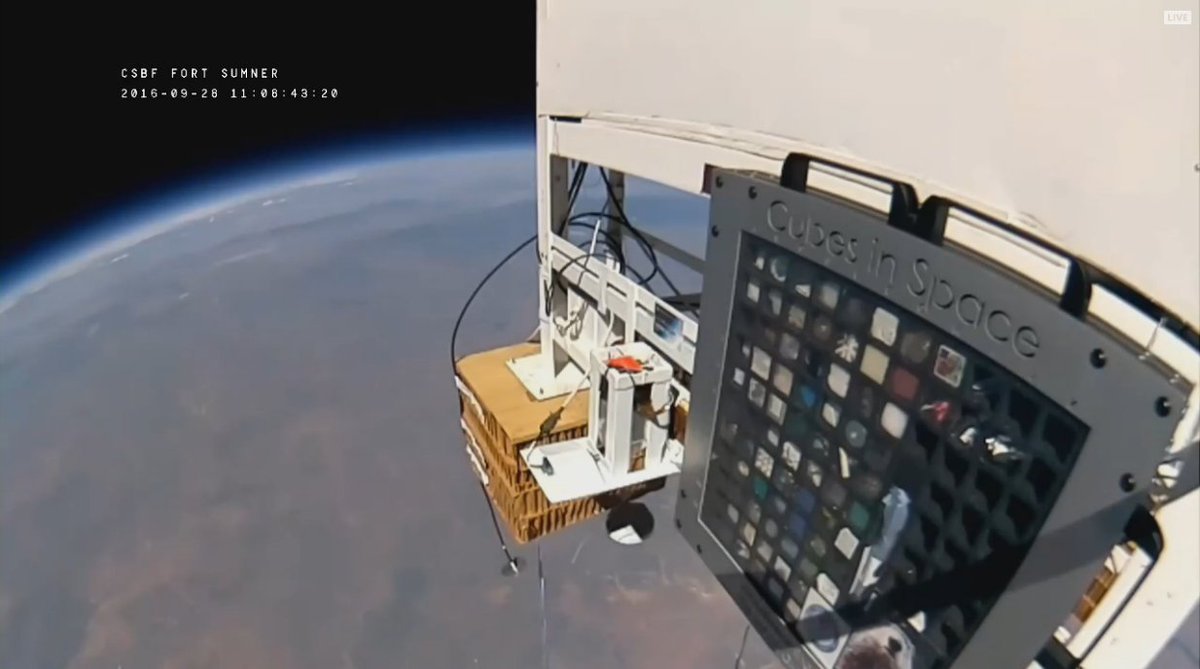Purpose of the flight and payload description
The primary objective of the mission was to validate a new balloon film as well to perform in-flight tests on several systems to be used in long duration balloon (LDB) flights. For this purpose a technological square gondola built by Columbia Scientific Balloon facility was used as we can see in the picture at left. Among the items tested during the flight were a new solar power system and a new rotator used to orient payloads.
Additionally, the test flight gondola transported several "piggy back" experiments flown as missions of opportunity. The payloads included were:
A module of the MIRCA (Micro Return Capsule) project. MIRCA is a planetary entry probe re-entry demonstrator designed by NASA Goddard Space Flight Center, for the Cubesat Application for Planetary Entry Missions, a high-performing Cubesat system which includes a propulsion module and miniaturized technologies capable of surviving atmospheric entry heating, while reliably transmitting scientific and engineering data.
Several experiments belonging to Cubes in Space an international educational initiative for school children that teaches them how to design STEM -science, technology, engineering and mathematics- experiments for launch into space. The experiments are housed inside small transparent cubes which are then installed inside a specially designed frame that is attached to the external structure of the gondola.
The last two experiments were payloads devoted to record acoustic signals from three large explosions performed at the Energetic Materials Research and Testing Center (EMRTC) facility outside Socorro, New Mexico. The timing of the explosions was coordinated with NASA to make sure the balloon was at float altitude at the moment of the blasts.
One of the experiments was USIE (UNC-Sandia Infrasound Experiment) developed by University of North Carolina at Chapel Hill and Sandia National Labs. and consisted of InfraBSU infrasound sensors and a Chaparral 60 infrasound sensor, logging signals at 200 Hz. The other payload was SISE (Stratospheric Infrasound Sensitivity Experiment) an experiment developed by the Southwest Research Institute, New Mexico consisting of five differential pressure transducers and five reference transducers.
Details of the balloon flight
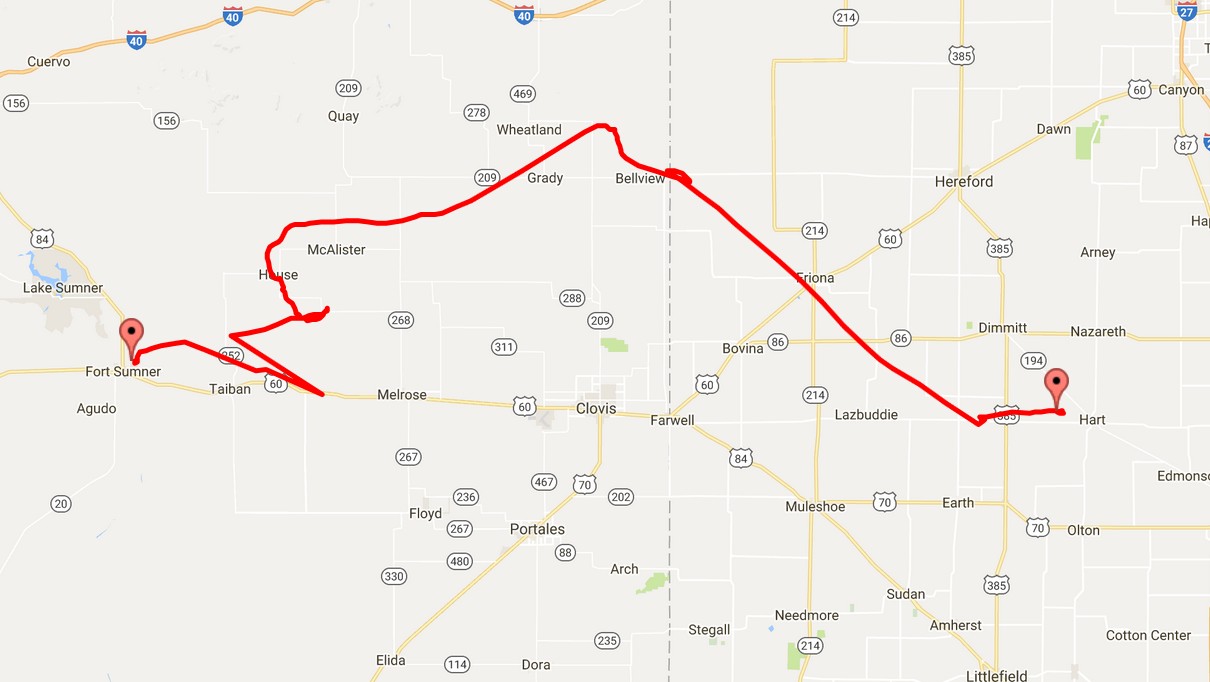
Balloon launched on: 9/28/2016 at 14:28 utc
Launch site: Scientific Flight Balloon Facility, Fort Sumner, (NM), US
Balloon launched by: Columbia Scientific Balloon Facility (CSBF)
Balloon manufacturer/size/composition: Zero Pressure Balloon Raven Aerostar - 29.470.000 cuft
Flight identification number: 673NT
End of flight (L for landing time, W for last contact, otherwise termination time): 9/28/2016 at 23:46 utc
Balloon flight duration (F: time at float only, otherwise total flight time in d:days / h:hours or m:minutes - ): 9 h 57 m
Landing site: W of Hart, Texas, US
The balloon was launched by dynamic method at 14:28 utc, on September 28, 2016. After a nominal ascent phase it reached float altitude of 37 km at approximately 17:00 utc, moving in NE course as we can see in the map above (click to enlarge). A few minutes before crossing the Texas border the balloon changed its course to a SE heading which was maintained during the remainder of the flight.
Once the mission was completed, at 23:46 utc the flight was terminated. The payload impacted West of Hart, Texas after a total flight time of 9 hours and 57 minutes.
External references
- Cubes In Space website
- Explosion-Generated Infrasound Recorded on Ground and Airborne Microbarometers at Regional Distances Seismological Research Letters (2018) 89 (4): 1497
- NASA Launches Back-to-Back Scientific Balloons
13148If you consider this website interesting or useful, you can help me to keep it up and running with a small donation to cover the operational costs. Just the equivalent of the price of a cup of coffee helps a lot.

